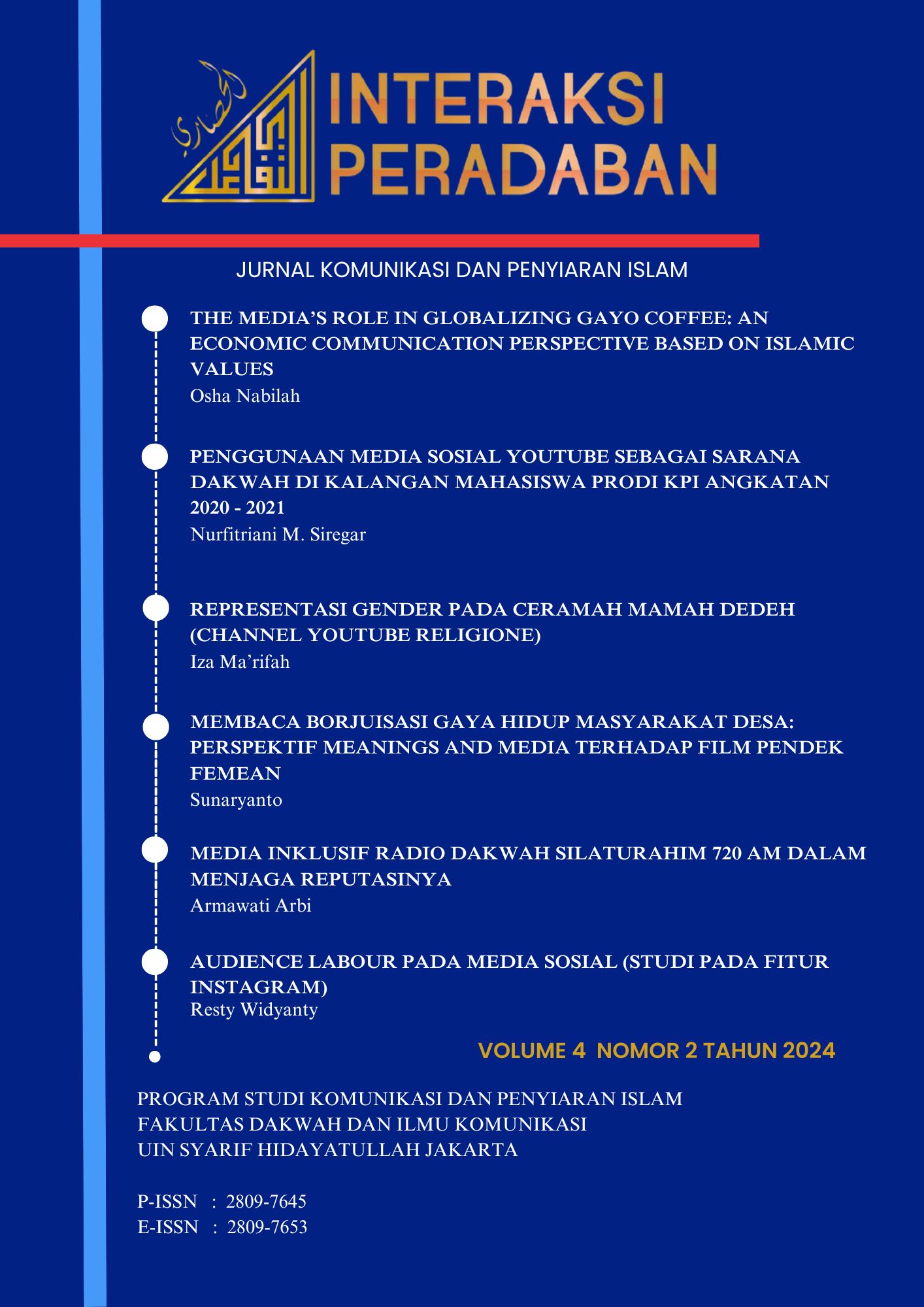Audience Labour pada Media Sosial (Studi pada Fitur Instagram)
DOI:
https://doi.org/10.15408/interaksi.v4i2.41647Keywords:
digital labour, Instagram, audience labourAbstract
Communication theory has a broad and dynamic audience concept when discussing about public behavior and its relations with the media. Now profileration of technology such as internet supports the change in behavioral characteristics of the audience, it becomes more active or can be said it becomes hyperactive. Social media such as Instagram also support that notion in the nature of the audience by providing space and features that giving an easier process of content production by audiences. These features are mainly perceived to support the practice of mobilizing audiences by making the user as a labour. When discussing the mobilization of audiences, Eran Fisher provides three ways social media mobilize audiences to gain surplus value and make audiences as high resources workforce. That concept happens through the process of consumption, production, and marketing by audience. This paper discusses how Instagram, through these three ways, mobilize audiences and make them as audience labor.References
million. (2017, April 26). Diambil dari https://instagram-press.com/blog/2017/04/26/700-million/
Alhabash, S., & Ma, M. (2017). A Tale of Four Platforms: Motivations and Uses of Facebook, Twitter, Instagram, and Snapchat Among College Students? Social Media + Society, 3, 205630511769154.
Anderson, K. E. (2016). Getting acquainted with social networks and apps: Instagram’s instant appeal. Library Hi Tech News, 33, 11–15.
APJII. (2016). Penetrasi dan Pengguna Internet di Indonesia 2016.
Bohang, F. K. (2017, Juli 27). Indonesia, Pengguna Instagram Terbesar se-Asia Pasifik. Diambil 4 Oktober 2017, dari http://tekno.kompas.com/read/2017/07/27/11480087/indonesia-pengguna-instagram-terbesar-se-asia-pasifik
Carah, N., & Shaul, M. (2016). Brands and Instagram: Point, tap, swipe, glance. Mobile Media & Communication, 4, 69–84.
Drakopoulou, S. (2017). “We Can Remember It for You”: Location, Memory, and Commodification in Social Networking Sites. SAGE Open, 7, 215824401771202.
Fisher, E. (2015). ‘You Media’: audiencing as marketing in social media. Media, Culture & Society, 37, 50–67.
Fuchs, C. (2011). New Media, Web 2.0 and Surveillance: Web 2.0 Surveillance. Sociology Compass, 5, 134–147.
Fuchs, C. (2012). The Political Economy of Privacy on Facebook. Television & New Media, 13, 139–159.
Fuchs, C. (2014). Digital prosumption labour on social media in the context of the capitalist regime of time. Time & Society, 23, 97–123.
Herman. (2015, September 9). Akhirnya, Instagram Ads Hadir di Indonesia. Diambil 10 Desember 2017, dari http://brt.st/4QBK
Hu, Y., Manikonda, L., & Kambhampati, S. (2014). What we
instagram: A first analysis of instagram photo content and user types (hlm. 595–598). Dipresentasikan pada 8th International Conference on Weblogs and Social Media, ICWSM 2014s, United States: The AAAI Press.
Instagram. (2017). Membuat Profil Bisnis di Instagram. Diambil 10 Oktober 2017, dari https://business.instagram.com/blog/creating-a-business-profile-on-instagram?locale=id_ID
Lee, M. (2011). Google ads and the blindspot debate. Media, Culture & Society, 33, 433–447.
Picone, I. (2017). Conceptualizing media users across media: The case for ‘media user/use’ as analytical concepts. Convergence: The International Journal of Research into New Media Technologies, 23, 378–390.
Rachmatunnisa. (2017, April 14). Begini Cara Repost di Instagram. Diambil 5 Oktober 2017, dari https://inet.detik.com/tips-dan-trik/d-3474455/begini-cara-repost-di-instagram
Scholz, T. (Ed.). (2013). Digital labor: the Internet as playground and factory. New York: Routledge.
Yadav, M., Joshi, Y., & Rahman, Z. (2015). Mobile Social Media: The New Hybrid Element of Digital Marketing Communications. Procedia - Social and Behavioral Sciences, 189, 335–343.










